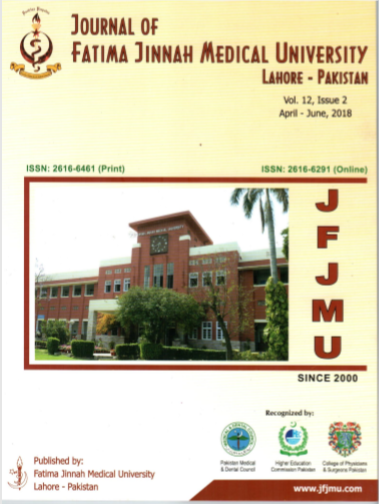Diagnostic accuracy of Color Doppler Ultrasonography to diagnose testicular tumors
Keywords:
Color Doppler Ultrasonography, histopathology and scrotal diseases.Abstract
Background: Testicular tumors are commonly diagnosed reproductive age group tumors. Color Doppler ultrasound can identify the tumor location as well its perfusion. It is an easily available modality and can differentiate intra-testicular and extra-testicular scrotal pathologies.
Objective: To determine the diagnostic accuracy of color Doppler Ultrasonography to diagnose testicular mass / tumors taking histopathology findings as gold standard.
Patients and methods: A cross sectional study was conducted at Radiology Department of Civil Hospital Karachi during the period of 1st January 2016 to 1st July 2017. Total 413 patients having scrotal pathologies/masses since more than 2 months were included. Color Doppler ultrasonography was performed by 2 senior radiologists with more than 5 years post fellowship experience. Transverse images were obtained in all patients and tumor was defined as heterogeneous mass in testes with increased vascularity. Patients were followed till histopathological findings were noted. The sensitivity, specificity, positive predictive value (PPV), negative predictive value (NPV), and diagnostic accuracy were calculated. Stratification was done. Post stratification chi-square test was applied. A p-value ≤0.05 was considered as significant.
Results: The mean age was 38.72±7.58 years. Mean duration of scrotal masses was 4.64±1.33 months. In Color Doppler ultrasound 58.8% patients were found positive for malignancy. Histopathological confirmation of testicular tumour was obtained in 48.4% of these patients. The sensitivity of color doppler ultrasonography was found to be 87%, specificity 67.6%, PPV 71.6%, NPV 84.7% and overall diagnostic accuracy 77.0%.
Conclusion: The diagnostic accuracy of Color Doppler Ultrasonography was found to be higher in the diagnosis of testicular tumor.
Downloads
Published
How to Cite
Issue
Section
License
The Journal of Fatima Jinnah Medical University follows the Attribution Creative Commons-Non commercial (CC BY-NC) license which allows the users to copy and redistribute the material in any medium or format, remix, transform and build upon the material. The users must give credit to the source and indicate, provide a link to the license, and indicate if changes were made. However, the CC By-NC license restricts the use of material for commercial purposes. For further details about the license please check the Creative Commons website. The editorial board of JFJMU strives hard for the authenticity and accuracy of the material published in the journal. However, findings and statements are views of the authors and do not necessarily represent views of the Editorial Board.


















